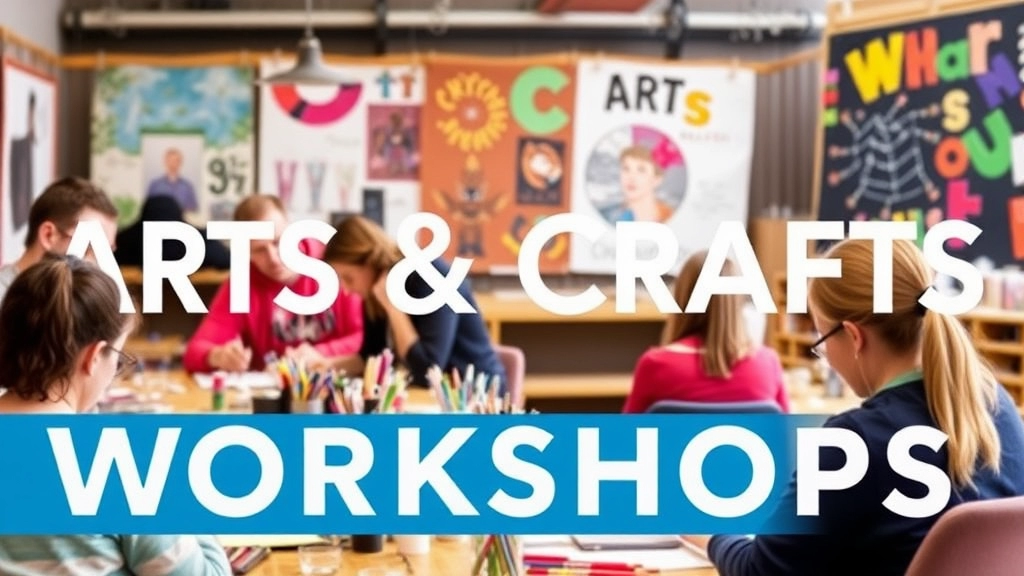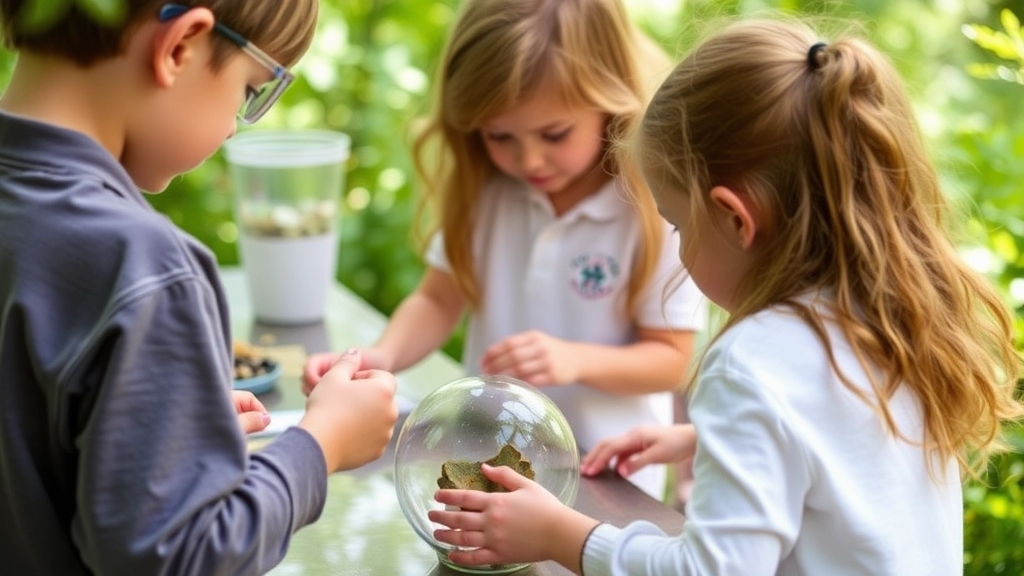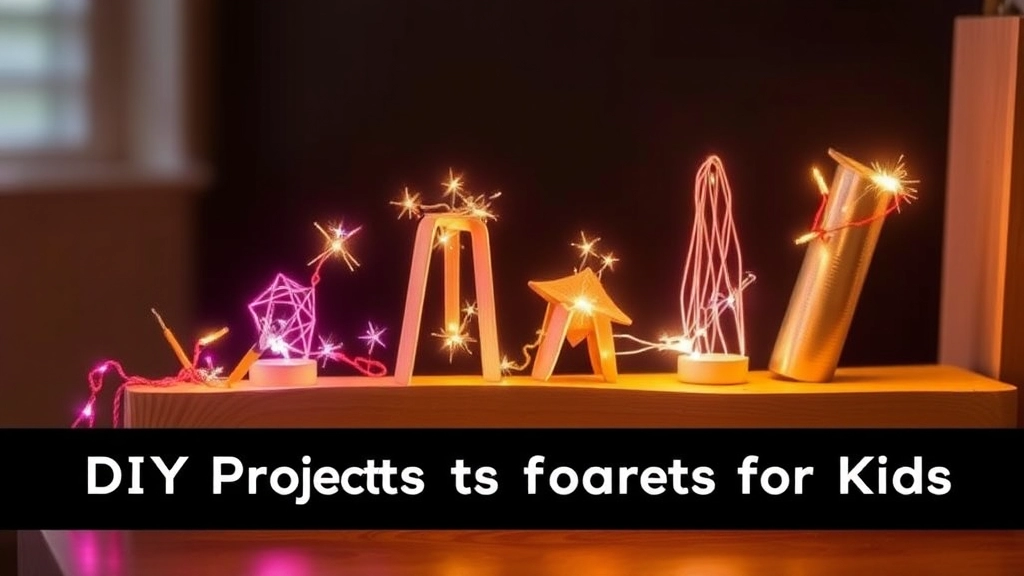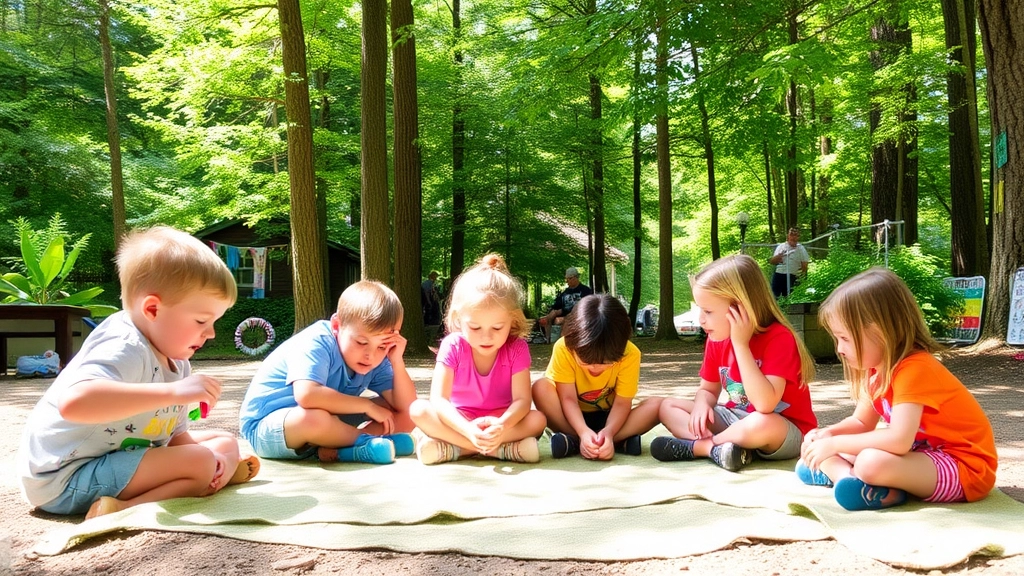When it comes to planning the perfect summer camp, having a variety of engaging class ideas can make all the difference. If you’re looking for inspiration, you’re in the right place. From outdoor adventures to creative arts and crafts, summer camp class ideas can transform a typical camp day into an unforgettable experience for kids. Let’s dive into some fun and educational activities that will keep campers excited and engaged all summer long.
Outdoor classes are always a hit, offering kids a chance to explore nature and learn new skills. Think nature hikes, scavenger hunts, and team-building games that encourage cooperation and friendship. Creative arts and crafts workshops are another great option, allowing children to express their creativity through painting, sculpting, or even making their own tie-dye shirts. These activities not only keep kids entertained but also help them develop new skills and interests.
Fun and Engaging Outdoor Class Ideas
Are you tired of seeing kids glued to screens all day? Wondering how to get them excited about learning again? Let me tell you, outdoor classes are the answer. Trust me, there’s nothing like fresh air and hands-on activities to spark curiosity and keep those young minds engaged.
Why Outdoor Classes Rock
First off, let’s talk about why outdoor classes are a game-changer. Kids today are cooped up indoors way too much. Getting them outside isn’t just about funâit’s about boosting their mental and physical well-being. Here are some solid benefits:
- Physical Activity: Running around helps burn off energy and keeps kids fit.
- Mental Health: Nature has a calming effect, reducing anxiety and stress.
- Improved Focus: Fresh air and a change of scenery can improve concentration and engagement.
Nature Walks and Scavenger Hunts
One of the easiest ways to get kids excited about learning outdoors is through nature walks and scavenger hunts. These activities are simple to set up and pack a punch in terms of educational value.
- Nature Walks: Teach kids about local flora and fauna. You can even throw in some fun facts about the ecosystem.
- Scavenger Hunts: Create a list of items for kids to find. This could be anything from a specific type of leaf to a unique rock. It’s like a treasure hunt but educational.
Outdoor Science Experiments
Who says science has to be confined to a lab? Take those experiments outside and watch the magic happen.
- Volcano Eruptions: A classic baking soda and vinegar volcano is even more fun when it can make a mess outside.
- Solar Ovens: Teach kids about renewable energy by building a solar oven and cooking something simple like s’mores.
Gardening Projects
Gardening is another fantastic way to mix education with outdoor fun. It’s hands-on, it’s rewarding, and it teaches kids about responsibility and the environment.
- Planting Seeds: Show kids how to plant seeds and take care of them. They’ll love watching their plants grow over time.
- Composting: Teach them about composting and the importance of recycling organic waste.
Outdoor Art Classes
Why not combine creativity with the great outdoors? Outdoor art classes can be incredibly inspiring.
- Nature Art: Use natural materials like leaves, sticks, and stones to create art. This can be anything from collages to sculptures.
- Plein Air Painting: Set up easels and let kids paint what they see. This can help improve their observational skills and artistic abilities.
Storytelling Sessions
Outdoor storytelling sessions can be magical. Find a shady spot under a tree and let the storytelling begin.
- Interactive Stories: Get the kids involved by letting them add to the story or act out parts.
- Nature-Themed Tales: Choose stories that are related to nature to make the experience even more immersive.
Creative Arts and Crafts Workshops

Ever struggled to keep kids engaged without resorting to screens?
You’re not alone.
Let’s dive into Creative Arts and Crafts Workshops—an absolute game-changer.
Why Arts and Crafts?
Kids love getting their hands dirty with paint and glue.
But it’s not just about the mess.
It’s about creativity and expression.
Getting Started
First off, gather your supplies.
Think:
- Paper
- Crayons
- Scissors
- Glue
- Paints
Cheap, easy to find, and versatile.
Simple Projects
Let’s keep it simple.
Paper Plate Masks are always a hit.
- Cut out eye holes.
- Let the kids paint and decorate.
- Attach a string to wear.
Rock Painting is another winner.
- Collect smooth rocks.
- Use acrylic paint.
- Seal with a varnish.
Seasonal Crafts
Tie your projects to the seasons.
Autumn Leaf Collages:
- Collect leaves.
- Glue them to paper.
- Add some glitter for fun.
Winter Snowflakes:
- Fold paper.
- Cut out shapes.
- Unfold for a snowflake surprise.
Story Time Integration
Ever thought of combining stories with crafts?
Read a book and then craft characters from the story.
For example:
“The Very Hungry Caterpillar”:
- Read the book.
- Make a caterpillar with pom-poms and pipe cleaners.
Group Projects
Kids love working together.
Try a Mural Project.
- Get a big roll of paper.
- Let each kid paint a section.
- Hang it up for everyone to admire.
Real-Life Example
I once had a group of kids make their own superhero masks.
They loved it.
Each mask was unique.
And the best part?
They wore them for the rest of the day, feeling like heroes.
Team-Building and Cooperative Games
Ever wondered how to get kids working together without the usual chaos? Team-building and cooperative games might be your answer. Let’s dig into this with some real talk and practical tips.
Why Team-Building Matters
Kids these days are glued to screens, right? Getting them to interact face-to-face can seem like a mission impossible. But team-building games can help:
- Boost social skills: Kids learn to communicate better.
- Build trust: They start to rely on each other.
- Encourage problem-solving: They figure out how to tackle challenges together.
Top Team-Building Games
Alright, let’s cut to the chase. Here are some killer games that are both fun and effective:
- Human Knot:
- How to Play: Kids stand in a circle, grab hands with two different people across the circle.
- Objective: Untangle the “knot” without letting go of hands.
- Why It Works: Promotes communication and teamwork.
- Capture the Flag:
- How to Play: Split kids into two teams, each with a flag to protect while trying to capture the opponent’s flag.
- Objective: Capture the other team’s flag and bring it back to your territory.
- Why It Works: Teaches strategy and cooperation.
- Trust Fall:
- How to Play: One child falls backward, trusting their team to catch them.
- Objective: Build trust among team members.
- Why It Works: Reinforces trust and confidence.
Real-Life Example
I remember this one time we had a group of kids who just couldn’t get along. We tried the Human Knot game. At first, it was a messâlots of giggles and confusion. But then something clicked. They started talking, strategising, and eventually untangled themselves. By the end, they were high-fiving and laughing together. It was like magic.
Tips for Success
Want to make sure these games hit the mark? Here are some pro tips:
- Set clear rules: Kids need to know what’s expected.
- Be inclusive: Make sure everyone gets a turn.
- Debrief: After the game, talk about what worked and what didn’t.
Common Concerns
- “What if they don’t get along?”: That’s the point! These games are designed to help kids overcome differences.
- “What if someone gets hurt?”: Always supervise and choose age-appropriate games.
For more ideas on creating a fun and inclusive environment, check out our guide on summer camp themes and descriptions. If you’re planning a camp and need some creative inspiration, don’t miss our creative summer camp art ideas.
Interactive Science and Nature Exploration

Ever wondered how to get kids excited about science and nature?
Let’s dive into some hands-on, interactive activities that will make them forget they’re even learning.
Why Interactive Science and Nature?
Kids are naturally curious.
They love to explore and ask questions.
But how do you turn that curiosity into a full-blown love for science and nature?
Start with Simple Experiments
Kids love to see things happen in real-time.
Here are a few easy experiments to kick things off:
- Vinegar and Baking Soda Volcano: A classic but always a hit. Mix vinegar and baking soda to watch a “volcano” erupt.
- Plant Growth Observation: Plant seeds in different conditions (light, dark, wet, dry) and observe the differences.
- Bug Hunt: Grab a magnifying glass and go on a bug hunt. Identify different insects and learn about their habitats.
Nature Walks and Scavenger Hunts
Who says learning can’t be an adventure?
- Nature Walks: Take a stroll through a local park or nature reserve. Bring along a field guide to identify plants and animals.
- Scavenger Hunts: Create a list of items for kids to find. Think leaves, rocks, feathers, and more.
Interactive Science Kits
Sometimes, a little structure goes a long way.
- DIY Science Kits: These come with all the materials needed for various experiments. Think chemistry sets, crystal growing kits, and more.
- Subscription Boxes: Monthly science kits that deliver new experiments to your door. Keeps the excitement going all year long.
Story Time with a Twist
Kids love stories.
So why not mix in a bit of science?
- Nature-Themed Books: Read stories that focus on animals, plants, and the environment.
- Science Stories: Books that explain scientific concepts in a fun and engaging way. Think “The Magic School Bus” series.
Real-Life Examples
Remember when we took the kids to the local pond?
We brought along some nets and jars.
Caught tadpoles, minnows, and even a couple of frogs.
The kids were fascinated.
They asked a million questions and couldn’t wait to get home and research more about what they found.
Water-Based Activities for Active Learning
Ever wondered how to keep kids engaged while they learn? Water-based activities for active learning might be your answer. Picture this: kids splashing around, having a blast, and picking up new skills without even realising it. Sounds like a win-win, right?
Why Water-Based Activities?
Water activities aren’t just about fun; they’re a powerhouse for learning. Here’s why:
- Sensory Development: Water play engages multiple senses, helping kids develop sensory skills.
- Motor Skills: Activities like swimming or water balloon tosses improve coordination and strength.
- Problem Solving: Games involving water often require kids to think critically and solve problems.
Top Water-Based Learning Activities
- Water Balloon Maths
- Fill balloons with water and label them with numbers.
- Kids can toss the balloons into buckets marked with different sums.
- Learning Outcome: Enhances arithmetic skills while keeping them cool and active.
- Floating and Sinking Experiments
- Gather various objects and predict whether they will float or sink.
- Test the predictions in a tub of water.
- Learning Outcome: Teaches basic principles of buoyancy and scientific thinking.
- DIY Water Wall
- Create a water wall using recycled materials like plastic bottles and tubes.
- Kids can pour water and observe how it travels through different paths.
- Learning Outcome: Encourages engineering skills and understanding of water flow.
Real-Life Example: The Splash Science Day
Let me share a quick story. Last summer, we hosted a “Splash Science Day” at our local park. We set up various stations, each with a different water-based activity. Kids moved from station to station, learning about everything from the water cycle to basic physics. Not only did they have a fantastic time, but parents were thrilled to see their kids so engaged and learning.
Tips for Successful Water-Based Learning
- Safety First: Always ensure there’s adult supervision, especially with younger children. For more tips, check out our essential safety tips on preventing summer camp drownings.
- Weather Watch: Pick a warm, sunny day to avoid chills and keep the fun going.
- Prep Materials: Have all your materials ready beforehand to avoid any interruptions.
- Mix It Up: Combine educational content with pure fun. Think water slides followed by a quick science lesson. For more ideas, see our guide on play games, crafts, and activities.
Performing Arts and Talent Show Preparation

Ever wondered how to get kids excited about performing arts and talent shows?
Trust me, I get it.
It can be a challenge to keep their attention and enthusiasm high.
But here’s the thing—when done right, it’s incredibly rewarding.
So, let’s dive into how we can make this a blast for everyone involved.
Why Performing Arts?
Performing arts aren’t just about singing or dancing.
They’re about confidence, expression, and teamwork.
Kids get to explore their creative side while also learning valuable life skills.
And who doesn’t want that?
Getting Started
First off, let’s talk about prepping for the talent show.
You need a plan, right?
Here’s a simple roadmap:
- Brainstorm Ideas: Gather the kids and have a brainstorming session.
- What do they enjoy?
- What are they good at?
- Let them pick their own acts to keep it authentic.
- Practice Sessions: Schedule regular practice times.
- Make it fun, not a chore.
- Rotate between different acts to keep things fresh.
- Props and Costumes: Encourage creativity here.
- Let the kids make their own props.
- Simple costumes can go a long way in boosting their confidence.
- Rehearsals: Do a couple of full run-throughs.
- Iron out any kinks.
- Make sure everyone knows their cues.
Making It Engaging
You want to keep the energy high, right?
Here’s how:
- Mini-Workshops: Break down skills into bite-sized workshops.
- Singing techniques
- Dance moves
- Acting tips
- Guest Speakers: Bring in local artists or performers.
- They can share their experiences.
- Kids love hearing real-life stories.
- Feedback Sessions: Create a positive feedback loop.
- Constructive criticism
- Praise for effort and improvement
Real-Life Example
Let me share a quick story.
Last year, we had a shy kid who didn’t want to perform.
We paired him with a buddy who had more experience.
Guess what?
By the end of the term, he was leading the dance group!
The Big Day
Alright, the big day is here.
Here’s how to make it smooth:
- Set Up Early: Get the stage and seating ready well in advance.
- Sound Check: Test all the mics and speakers.
- Run Through: Do a final quick run-through without the audience.
- Encourage: Give the kids a pep talk.
- Remind them it’s all about fun.
- No pressure, just enjoyment.
Cooking Classes and Food-Based Fun
Ever wondered how to make cooking classes not just educational but also a blast for kids? You’re not alone. Many parents and educators grapple with keeping kids engaged while teaching them essential life skills. Let’s dive into some fun and engaging ways to make cooking classes the highlight of their week.
Why Cooking Classes?
First off, why even bother with cooking classes for kids? Here’s the deal:
- Life Skills: Cooking is an essential skill everyone should have.
- Healthy Eating: Kids are more likely to eat what they make.
- Math and Science: Measuring ingredients and understanding how they mix involves basic math and science.
- Creativity: Cooking is an art. Let them experiment!
Setting Up the Perfect Cooking Class
Before we get into the nitty-gritty, let’s talk setup. You don’t need a state-of-the-art kitchen to make this work. Here’s a simple checklist:
- Safety First: Ensure knives are kid-friendly and teach them basic safety.
- Ingredients: Opt for easy-to-find ingredients.
- Tools: Measuring cups, mixing bowls, and wooden spoons are a must.
- Clean-Up: Have a plan for cleaning up. Trust me, it’s going to get messy.
Kid-Friendly Recipes
Alright, let’s get to the fun part. What can kids actually cook? Here are some easy, fun, and nutritious recipes:
- Mini Pizzas
- Ingredients: Whole grain English muffins, tomato sauce, shredded cheese, assorted toppings.
- Steps: Let kids spread the sauce, sprinkle cheese, and add their favourite toppings. Bake until cheese is melted.
- Fruit Kabobs
- Ingredients: Assorted fruits (grapes, strawberries, pineapple chunks), wooden skewers.
- Steps: Kids can thread the fruits onto skewers, making patterns or rainbow colours.
- Veggie Wraps
- Ingredients: Tortillas, hummus, assorted veggies (carrots, cucumbers, bell peppers).
- Steps: Spread hummus on the tortilla, add veggies, and roll it up.
Make It a Learning Experience
Cooking isn’t just about food; it’s a fantastic opportunity for learning. Here’s how to sneak in some education:
- Math Skills: Have them measure ingredients. Talk about fractions and conversions.
- Science Concepts: Explain why bread rises or why oil and water don’t mix.
- Cultural Lessons: Cook dishes from different countries and discuss their origin.
Keep It Interactive
Kids love hands-on activities. Here are some ways to keep them engaged:
- Taste Tests: Let them taste ingredients before and after cooking.
- Cooking Contests: Host friendly competitions for the best-decorated cupcake or most creative sandwich.
- Story Time: Share fun facts or stories about the dish you’re making.
Real-Life Stories
I remember when I first introduced cooking classes at a local community centre. The kids were hesitant at first, but once they realised they could eat what they made, their enthusiasm skyrocketed. One little girl, Emma, was so proud of her mini pizza that she insisted on making it for her family dinner that night. Her mum later told me it was the first time Emma had eaten vegetables without a fuss!
Innovative DIY Projects for Kids

Ever wondered how to keep kids entertained without breaking the bank?
Or how to spark their creativity while keeping them off screens?
Let’s dive into some innovative DIY projects for kids that are both fun and educational.
Why DIY Projects?
Kids are curious creatures.
They love to explore, create, and learn.
DIY projects can:
- Boost their creativity
- Improve problem-solving skills
- Keep them engaged for hours
Simple and Fun Ideas
Homemade Playdough
Who doesn’t love playdough?
It’s easy to make and keeps kids busy.
Here’s a quick recipe:
- 2 cups plain flour
- 1 cup salt
- 1 cup cold water
- 1 tbsp vegetable oil
- Food colouring
Mix, knead, and voilà!
DIY Bird Feeder
Teach kids about nature with a simple bird feeder.
You’ll need:
- A toilet paper roll
- Peanut butter
- Birdseed
Spread peanut butter on the roll, roll it in birdseed, and hang it outside.
Watch the birds flock in!
Painted Rocks
Got some rocks lying around?
Perfect.
Get some acrylic paint and let the kids’ imagination run wild.
They can create ladybugs, monsters, or even mini rock gardens.
Keep It Real
When I was a kid, my mum used to set up a DIY station in the kitchen.
We’d spend hours making crafts, and it was the best part of my day.
These projects aren’t just about keeping kids busy.
They’re about creating memories.
Tips to Keep It Fresh
- Rotate projects to keep things exciting
- Involve kids in choosing the next DIY project
- Use everyday household items to save money
Why It Works
DIY projects are hands-on.
They’re interactive.
Kids get to see the fruits of their labour, and that’s incredibly rewarding.
Plus, it’s a great way for parents to bond with their kids.
Skill-Building Sports and Physical Education
Alright, let’s dive into something we all know is super important but sometimes gets overlookedâskill-building sports and physical education. You ever wonder how to keep kids active and engaged without them feeling like it’s a chore? Yeah, me too. Let’s break it down so you can make it happen.
Why Focus on Skill-Building Sports?
First off, why should we even care about skill-building sports? Simple. Physical activity is crucial for kids’ overall development. It’s not just about getting them to run around and burn off energy. We’re talking about:
- Building Confidence: When kids learn new skills, they feel good about themselves.
- Teamwork: Sports teach kids how to work together.
- Discipline: Consistent practice helps develop self-discipline.
- Health Benefits: Keeps them fit and healthy, reducing the risk of obesity and other health issues.
How to Make Physical Education Engaging
Now, how do we make this fun and not just another boring PE class? Here are some tips:
1. Mix It Up
Variety is the spice of life, right? Same goes for sports. Rotate activities to keep things fresh:
- Team Sports: Football, basketball, and volleyball.
- Individual Sports: Tennis, swimming, and gymnastics.
- Adventure Sports: Rock climbing, hiking, and orienteering.
2. Skill Stations
Set up different stations focusing on various skills. Kids can rotate through them, keeping things dynamic and engaging.
- Dribbling: Set up cones for dribbling drills.
- Throwing and Catching: Use softballs for catch practice.
- Balance: Balance beams or even a simple line on the ground.
3. Friendly Competitions
Who doesn’t love a bit of friendly competition? Organise mini-tournaments or challenges. Make sure to keep it light-hearted and fun.
- Relay Races: Simple but effective.
- Obstacle Courses: Mix in different physical challenges.
- Skill Challenges: Who can score the most baskets in a minute?
Real-Life Example: The Power of Team Sports
Let me share a quick story. I once worked with a group of kids who were not too keen on sports. We introduced them to a variety of team sports, starting with something simple like football. At first, they were hesitant, but as they started learning the rules and practising, something amazing happened. They began to work together, communicate better, and even started looking forward to PE classes. It was a game-changerâno pun intended.
The Role of Coaches and Teachers
A great coach or teacher can make a world of difference. Here’s what they can do:
- Encourage: Positive reinforcement goes a long way.
- Teach: Break down skills into manageable steps.
- Motivate: Keep the energy high and the atmosphere positive.
For more ideas on keeping kids engaged, check out our fun games to play at summer camp or explore our top summer sports camps in Jacksonville, FL.
Rainy Day Indoor Activity Alternatives
Ever been stuck indoors with a group of kids on a rainy day?
It’s a nightmare, right?
But it doesn’t have to be.
Rainy day indoor activity alternatives can be just as fun and engaging as any outdoor adventure.
Let’s dive in.
Why Indoor Activities Matter
We all know the struggle of keeping kids entertained when the weather’s not cooperating.
Boredom sets in.
Chaos ensues.
But with the right indoor activities, you can turn a dreary day into an unforgettable experience.
Creative Indoor Games
- Board Games: Classic, timeless, and perfect for all ages.
- Charades: No props needed, just imagination.
- Indoor Scavenger Hunt: Create a list of items to find around the house.
Arts and Crafts
Rainy days are perfect for getting creative.
- DIY Projects: Think homemade slime or simple origami.
- Painting and Drawing: Set up a mini art studio.
- Craft Kits: Pre-packaged fun, no prep required.
Educational Fun
Keep the learning going, even indoors.
- Puzzle Games: Jigsaw puzzles or brain teasers.
- Science Experiments: Simple ones like baking soda and vinegar volcanoes.
- Reading Corner: Create a cozy nook with books and bean bags.
Interactive Technology
Let’s face it, sometimes tech is your best friend.
- Educational Apps: Loads of options that are both fun and informative.
- Virtual Tours: Museums, zoos, and more, all from your living room.
- Online Classes: From cooking to coding, the internet’s got it all.
Physical Activities
Kids need to burn off energy, rain or shine.
- Indoor Obstacle Course: Use pillows, chairs, and whatever else you have.
- Dance Party: Crank up the tunes and let loose.
- Yoga for Kids: Calm and stretch those little muscles.
Storytelling and Role Play
Unleash their inner actors.
- Story Time: Read aloud and let them act out the scenes.
- Dress-Up: Old clothes and costumes can create endless scenarios.
- Puppet Shows: Use socks or paper bags to make puppets.
Cooking and Baking
Get them involved in the kitchen.
- Simple Recipes: Think cookies, sandwiches, or fruit salads.
- Decorating: Let them go wild with icing and sprinkles.
- Taste Tests: Try new foods and guess the ingredients.
FAQs About Summer Camp Class Ideas
What are some engaging summer camp class ideas for kids?
Some engaging summer camp class ideas include Creative Arts and Crafts Workshops, Interactive Science and Nature Exploration, Performing Arts and Talent Show Preparation, and Innovative DIY Projects for Kids.
Why are arts and crafts workshops beneficial for kids?
Arts and crafts workshops are beneficial because they foster creativity and expression. They also keep kids engaged without the need for screens.
What materials are needed for arts and crafts workshops?
You will need basic supplies such as paper, crayons, scissors, glue, and paints. These materials are cheap, easy to find, and versatile.
Can you suggest some simple arts and crafts projects?
Yes, simple projects include Paper Plate Masks and Rock Painting. These activities are easy to set up and always a hit with kids.
How can I integrate story time with arts and crafts?
You can read a book and then craft characters from the story. For example, after reading “The Very Hungry Caterpillar,” you can make a caterpillar using pom-poms and pipe cleaners.
What are some interactive science activities for kids?
Interactive science activities include the Vinegar and Baking Soda Volcano, Plant Growth Observation, and Bug Hunts. These activities are hands-on and engaging.
How can nature walks and scavenger hunts be educational?
Nature walks and scavenger hunts can be educational by allowing kids to explore their environment, identify different plants and animals, and learn about their habitats.
What are some performing arts activities for a summer camp?
Performing arts activities include singing, dancing, and acting. You can also prepare for a talent show by brainstorming ideas, holding practice sessions, and creating props and costumes.
How can I make performing arts activities engaging for kids?
To keep kids engaged, you can break down skills into mini-workshops, bring in guest speakers, and hold feedback sessions to provide constructive criticism and praise.
What are some innovative DIY projects for kids?
Innovative DIY projects include Homemade Playdough, DIY Bird Feeders, and Painted Rocks. These projects are fun, educational, and keep kids engaged for hours.
Why are DIY projects effective for kids?
DIY projects are effective because they boost creativity, improve problem-solving skills, and provide a hands-on, interactive learning experience. They also create lasting memories and opportunities for parent-child bonding.
References
-
Quick and Easy Crafts for Kids
-
Kids Crafts – The Spruce Crafts
-
Fun DIY Projects for Kids

